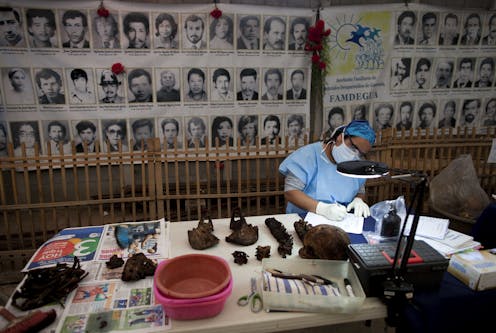the painstaking, painful process of returning genocide victims to their families
- Written by Olivera Simic, Associate Professor, Griffith University

“Who would like to share their testimonio with the North American anthropologist?” a local woman asks a room full of men, women and children, survivors of genocide in Guatemala.
Testimonio is a ritual for the collective telling and sharing of stories of violence and loss. Alexa Hagerty, a US anthropologist who was present in the room, did not see this coming. She had spent months training with forensic teams in exhumation at mass grave sites, investigating human rights violations in Guatemala and Argentina, countries ravaged by dictatorships and genocide.
Review: Still Life with Bones: Genocide, Forensics and What Remains – Alexa Hagerty (Penguin Random House)
In this room, in the El Quiché[1] region, in 2014, a local woman gestured to her to take a seat and to listen to testimonios. Hagerty did as she was told, but felt as though she was intruding in other people’s lives and their pain. She wondered if she was doing more harm than good by hearing stories of systemic persecution, of massacres, torture, rape, murdered children and pregnant women, destroyed villages and scorched fields.

















